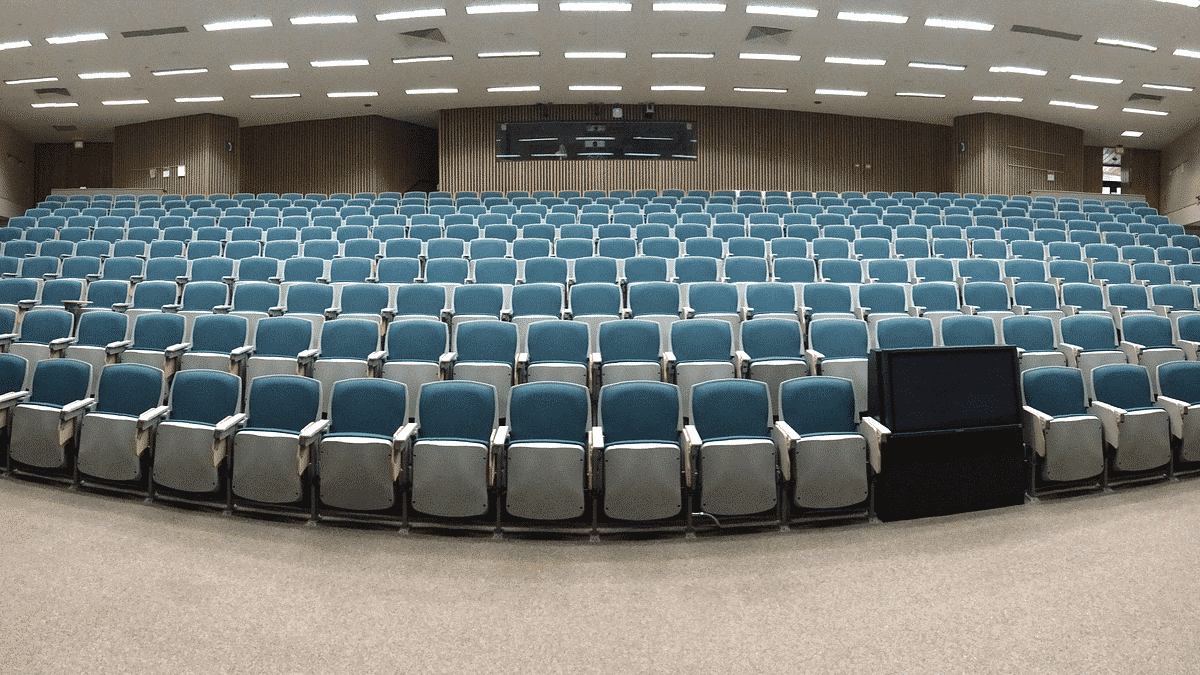When Professors Plagiarize
Who watches the watchers?

The story of Christine Roth has just about everything that you could want out of any drama. It features allegations of early-career misdeeds, a whistleblower with an alleged grudge, a lawsuit to keep the details of the case private and even accusations that a third party is responsible for the plagiarism.
However, what’s most notable about the story is both how common it is and how common it isn’t. Though we’ve seen our share of stories of professors and other academics being accused of plagiarism, there’s still very little oversight over instructors, even as they put more and more pressure on their students to follow the rules.
The story raises a serious question: Who watches the plagiarism watchers? Who is keeping teachers in check? The answer, much of the time, is no one.
So let’s take a minute to look at Roth’s story, as reported by the Wisconsin State Journal, and why it may be a cautionary tale about the danger of plagiarism in academia and the complexity of dealing with it.
The Christine Roth Plagiarism Story

Exactly when the case began is not clear but the saga began with a whistleblower complaint. The whistleblower approached Roth’s school, The University of Winsconsin-Oshkosh (UW-Oshkosh) alleging that they had discovered a pattern of plagiarism in Roth’s career going all the way back to the beginning of her time at the university.
However, even at this early juncture we have controversy as Roth has accused the unnamed whistleblower of holding a grudge against her and saying that the claim was a personal and professional attack rather than an actual matter of ethical concern.
Still, the university followed up on the allegations. Bringing in two faculty members outside the English department, they reviewed seven documents from Roth’s career, focusing heavily on a document from 2004.
In that document they found significant verbatim plagiarism on 11 of the document’s 12 pages. They also found evidence of other issues in earlier works but found that the more recent of her research had no attribution issues. This led them to conclude that, “The number of essays she has produced with no attribution problems since this early work is a testament to the fact that these oversights in her early work were an anomaly in her career rather than the norm.”
Roth, however, had an explanation for the plagiarism in her earlier works. She did not deny that it was there but, instead, put the blame on an unnamed graduate student that worked with her for the 2002-2003 school year. According to Roth and another instructor that shared the student, the assistant’s work was “poorly cited” and “unsatisfactory.”
However, the 2016 report found that it was “implausible” the plagiarism was the work of the graduate student. Also, though the report did not fully investigate Roth’s 2001 dissertation, a quick search of it did find evidence near-verbatim text being used without citation.
The end result of the investigation was that Roth was demoted from an associate professor to an assistant professor. The two terms are generally used to designate tenured and untenured professors respectively.
The case came to a legal head when, in October 2018, the State Journal filed a request under the states open record laws to look at the documents related to the investigation. In January 2019, Roth sued the school to block the release of the documents, citing both harm to her reputation and other repercussions should they be made public.
In April 2019 a court ruled against her and the paper was given access to the documents and compiled their report, published earlier today, based upon them.
As for Roth herself, neither she nor her lawyer spoke with the paper on the case. Roth is still listed as an instructor in the English department in the UW-Oshkosh directory.
However, even after all of this great reporting by the paper, there are still a LOT of unanswered questions, including these six big ones.
5 Key Unanswered Questions
While the investigation into the allegations against Roth does answer a good deal of the questions that come up, it also leaves a lot unexplored. Many of these questions are of particular importance when dealing with faculty accused of plagiarism.
Key questions include:
- Why Was the Dissertation Not Investigated Further? Roth’s dissertation clearly had attribution issues, even with a cursory check, and it predated her time with the grad student she put much of the blame on. It seems logical to have followed up on the dissertation, even if it was outside the scope of the immediate investigation. To have made a discovery of potential plagiarism in it and then abandon it seems very odd, especially considering the potential ramifications for her degree.
- What Changed in Her Career? Though the news her more recent work is issue-free is great news, there’s no clear indication what changed. If the graduate student isn’t likely responsible (according to the university), writing off multiple citation issues as an “anomaly” seems to trivialize the issue. It’s very likely that something changed that improved her research habits and it would be good to know what, if for no other reason than for educating others.
- Is She Still Responsible if it Was the Graduate Student? If we assume that it was the graduate student, what responsibility does Roth still have? After all, she’s the one whose name is on the work and was supervising the work, including trusting them with her notes even after learning of their shortcomings. How would this really change Roth’s alleged cuplability?
- How Does Roth’s Repercussions Square Against the University’s Policies? Roth received a demotion but was allowed to keep her job. Would a student at the university receive the same treatment if it were discovered they had plagiarized several works earlier in their student career? While the university does seem to have strict anti-plagiarism policies, this is impossible to know without knowing how actual cases are handled.
- How Do We Handle Plagiarism When Someone Has Already Mended Their Way? All of the allegations against Roth deal with work more than ten years old and there is no evidence of issues in her more current papers. While her older work is part of why she got her promotion, is it fair to demote someone who has already been doing better work for a decade?
- How Many More Like Roth Are There? Given the “publish or perish” environment professors face, a general lack of oversight into their work and a limited desire to change the status quo, Roth is likely far from alone with plagiarism in her past. In fact, she may be somewhat unique in that her more recent work hasn’t been problematic.
On the last question, we know there are others, just not how many. Stories like this pop up in the news regularly. Last year, a Dartmouth professor resigned after being accused of plagiarizing his colleague. In 2014 a University of Arizona professor was caught plagiarizing from one of his students. Finally, in 2009 a UCLA professor resigned after being accused of plagiarizing in an academic journal. These are just a few.
But, as common as these stories seem to be, they’re rare compared to the number of likely cases that exist. Even if only a small percentage of professors commit plagiarism, few are ever detected and even fewer are punished in a way comparable to what a student would likely see.
In October 2017, an anonymous academic published an op-ed in The Guardian on the topic. Their work had been plagiarized by a professor and, despite reporting it, nothing was done about it. This is, in my experience, a very common problem. In fact, it’s the story of one of the first cases I ever worked on.
In the header of the column, the academic answered a simple but powerful question: How can we expect academic originality from students if we don’t uphold it?
I don’t have the answer for that.
Bottom Line
Roth’s story is intriguing and worth noting. However, what makes it most notable isn’t what happened, but the fact we know about it. Without the reporting of the State Journal, we likely would never know about this case and it would join a legion of other academic plagiarism cases quietly settled and forgotten.
The truth is this: We don’t know how serious the problem of professor plagiarism is because the systems to find it, investigate it, punish it and report it are not there the way they are with students.
Roth’s case only came about because a whistleblower, one supposedly with a personal grudge, filed a complaint that the university investigated but settled relatively quickly and quietly. It then took a newspaper and a lawsuit to get the details. This one case took two outside forces to bring it to a conclusion.
Compare that to students whose work is constantly being checked, there is a whole process for investigating such cases and a disciplinary system for responding to issues. Even though they might not be known individually, the case is usually tracked and details are kept for statistical purposes.
While it doesn’t make sense for professors to be held to the exact same standards and processes as their students, there are lessons that can be learned from how their pupils’ issues are addressed. This includes more proactive enforcement, continuing education on plagiarism issues and a dedicated policy for how such cases will be handled.
It might not seem like much, but stories like this one damage the reputation of academia and cause students to take plagiarism less seriously. After all, if it didn’t harm their instructors, why would it harm them?
Want to Reuse or Republish this Content?
If you want to feature this article in your site, classroom or elsewhere, just let us know! We usually grant permission within 24 hours.
